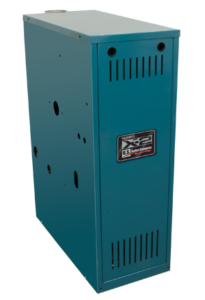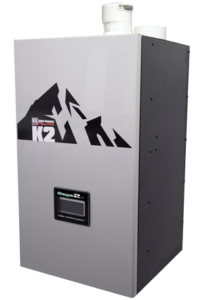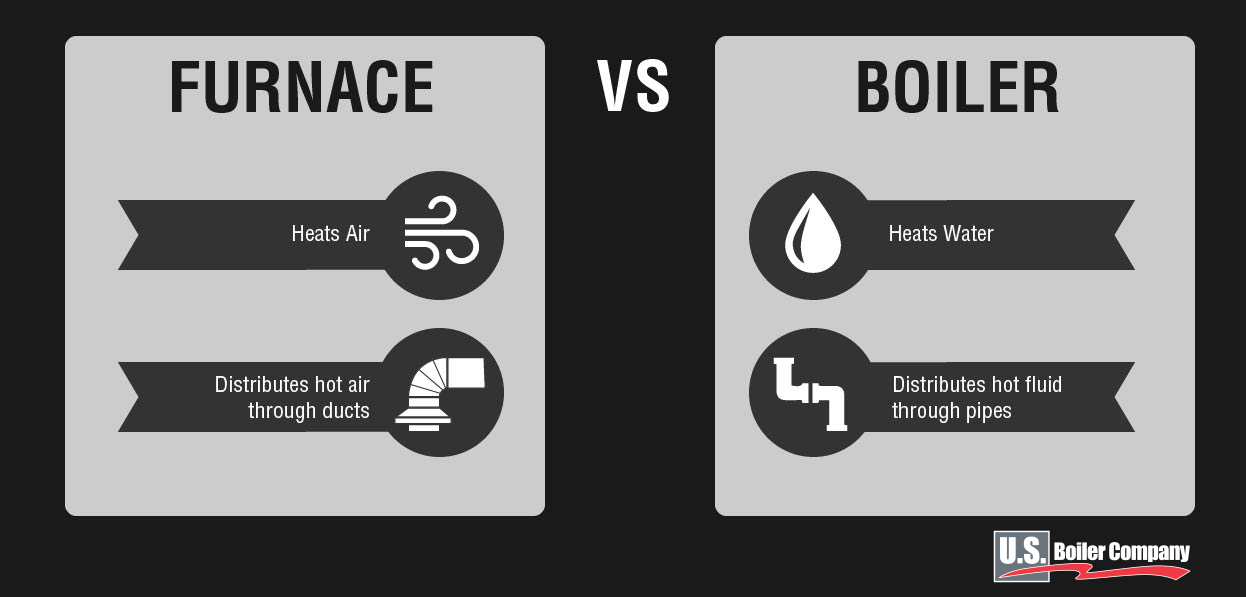Do I have a boiler or a furnace? What is the difference?!
We’re glad you asked! We hear this question a lot. Here at U.S. Boiler Company, which is located in Lancaster, PA, we manufacture some of the most efficient, durable boilers that money can buy. We make many different models to fit just about every home in North America.
So what is a boiler?
A boiler is a heating appliance that is installed by a professional contractor, used to heat a building through the use of hot water or steam. Different boilers are designed to run on different fue
 ls: heating oil, propane or natural gas. They can be used to heat a home though a wide variety of methods (baseboard radiators, cast iron radiators, in-floor radiant, fan coil units, panel radiators, etc.).
ls: heating oil, propane or natural gas. They can be used to heat a home though a wide variety of methods (baseboard radiators, cast iron radiators, in-floor radiant, fan coil units, panel radiators, etc.).
These systems – whether using steam or hot water – are collectively called “hydronic heat.” Hydronic heat is often considered to be one of the most efficient, comfortable and quiet options available to homeowners today. Plain and simple, boilers are part of a premium heating system.
Boiler Vs. Furnace
The words “boiler” and “furnace” are often used interchangeably by many, however a furnace and a boiler are very different. Both use a fuel source to heat a building, but that is where the similarities end.
Unlike boilers, furnaces are connected to ductwork, and they blow hot or warm air throughout the occupied space to maintain the temperature set at the thermostat. This is called a “forced air system.” Some people are of the opinion that forced air systems provide a lower comfort level because there is air blowing around inside the house, which can lead to uneven heat or cold spots. There is often noise and dust circulation associated with this air movement.
Want to know how to tell if you have a boiler or a furnace? It’s pretty simple. One way to know is to look for radiators, that’s usually a telltale sign. But as previously mentioned, not all hydronic systems utilize radiators. So if you’re still unsure, head to the basement, or wherever the heating system is installed. A boiler will be connected to pipe or tubing which is often copper or iron, but keep in mind that this piping may be covered in insulation. Boilers are typically shorter in height that furnaces, too.
A furnace, on the other hand, will be connected to ductwork, typically stretching all the way up to the ceiling. This may be sheet metal ductwork, or reflective fiber board. Again, ductwork may be wrapped in some sort of insulation. Pipe on a boiler is small and round, ductwork on a furnace is usually large and boxy in appearance.
Boiler Choices
As we mentioned, boilers can run on a variety of fuels. They vary greatly in size and design too. Cast iron boilers are considered to be great, tried-and-true units that can offer long lifecycles and easy maintenance.
Cutting-edge, high-efficiency boilers, or what the industry refers to as “condensing boilers,” provide even greater energy efficiency when installed correctly. These units are able to ramp up and down to meet the demand of the home based on a number of factors, especially outdoor temperature.
Hydronic systems have been in use for more than 100 years, but they have evolved to meet the demand of the modern end-user in much the same way as cars or other household appliances have evolved. Today, hydronic systems are a fantastic choice for old homes and brand new ones as well.
Maybe your home has a boiler that you want to replace, and you’re now facing the task of choosing the right boiler. If that’s the case, be sure to read – “How to choose the right replacement boiler.”


